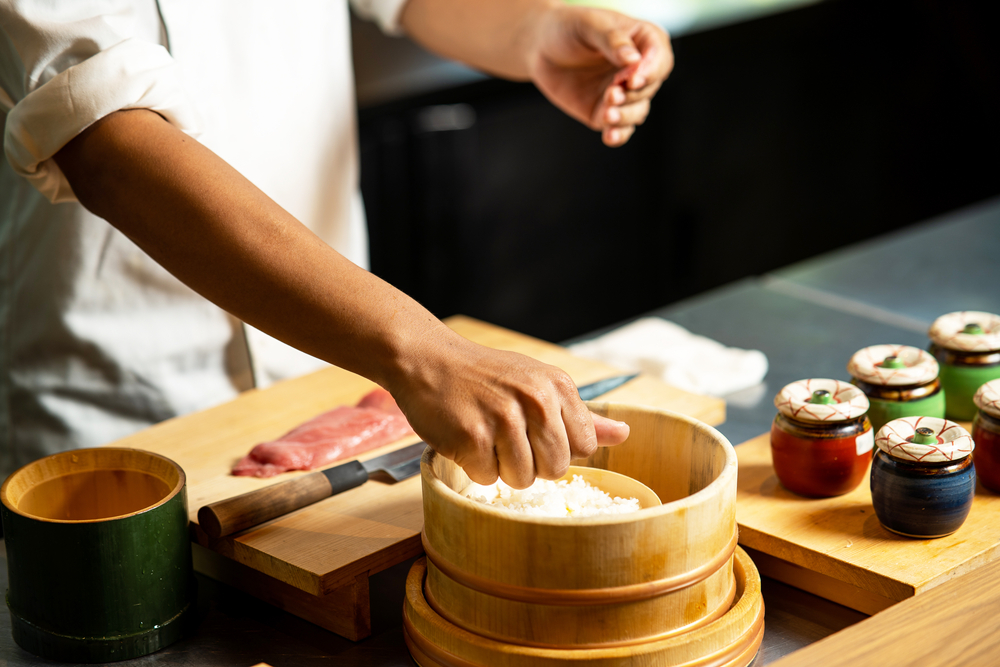There’s something deeply personal, almost reverent, about sitting at the chef’s table. It’s not just about food; it’s a front-row seat to a culinary performance, where artistry, trust and intimacy converge.
In the world of Japanese cuisine, few dining formats capture this essence quite like omakase. Rooted in the phrase “I’ll leave it up to you,” omakase invites diners to surrender control and let the chef guide them through a journey of flavours, textures and seasonal surprises.
From a quiet corner in Mayfair to neighbourhood gems tucked into village-like settings, the omakase restaurant in London has emerged as a defining symbol of refined dining, blending traditional craftsmanship with modern flair. But what truly sets this experience apart isn’t just the meticulous plating or rare fish flown in from Toyosu Market. It’s the emotional arc each course builds and the quiet, powerful connection between diner and chef.
More Than a Meal: A Story Told One Bite at a Time
When the first dish is placed before you, perhaps a sliver of otoro brushed with soy or a clean cut of scallop laced with yuzu, the experience begins. At an omakase restaurant in London, this isn’t just about the food itself, but about storytelling. The chef’s choice reflects not only what’s in season, but also their heritage, mood and philosophy. You’re not reading a menu; you’re interpreting a narrative.

The seating arrangement plays a vital role here. With no more than a dozen guests at a time, the chef engages with each person, explaining a garnish, describing the fish or offering a smile of quiet pride. It’s interactive without being performative. There’s a sense of theatre, but it’s rooted in humility and precision.
In many ways, this intimate setting makes it easier to understand why some diners believe they’ve found the best sushi in London, not simply because of the ingredients, but because of the unfiltered expression behind each dish.
A Slow and Intentional Escape From the Ordinary
In a city teeming with fast bites and crowded eateries, omakase dining feels almost rebellious. Each course arrives slowly, often just a piece or two at a time. You’re encouraged to savour not just the flavours, but the craftsmanship behind each cut. Whether you’re served buttery sea urchin or aged bluefin tuna, the focus isn’t on speed, but attention.
This is where the ritual of sitting at the chef’s table becomes meditative. Conversation dips, and your senses heighten. You start noticing the grain of the wooden counter, the brushstroke of wasabi, the quiet rhythm of the chef’s knife. Dining at one of the top 100 restaurants in the UK isn’t just about ticking off a bucket list. It’s about slowing down enough to feel present.
The chef might pause to answer a question or to prepare something tailored just for you, based on a glance or preference mentioned earlier. That subtle adaptability is part of what makes omakase so enchanting. It’s not mass-produced. It’s memory-infused.
When Hampstead Meets Hokkaido: A Local Twist on a Global Tradition
While traditional omakase is deeply rooted in Japanese customs, London’s culinary scene has adapted it with a distinctive voice. Chefs are now drawing inspiration from British terroir, combining it with global techniques. It’s not unusual to find pickled vegetables grown in Kent or sea bass from Cornwall making their way into a curated tasting menu.

This blend of cultures is why locals are seeking out a taste of Hampstead sushi that merges classic techniques with fresh, locally sourced ingredients. These curated experiences feel both familiar and exciting, respectful of tradition yet eager to evolve. They reflect the cosmopolitan, creative heartbeat of London.
Chefs are no longer confined to old-school rules. They’re innovating, infusing smoked soy with rosemary or plating sashimi on stone slabs that mimic London’s own architectural textures. The result is a deeply personal, geographically rooted omakase experience that still feels authentically Japanese.
Conclusion: Why the Chef’s Table Stays With You
Omakase dining isn’t just a culinary experience; it’s an emotional one. Sitting at the chef’s table transforms dinner into dialogue, and food into feeling. You taste not just the fish, but the silence between courses, the warmth of the chef’s presence, the story behind every ingredient.
In a city brimming with dining options, choosing to dine at an omakase restaurant in London means choosing intentionality over convenience, connection over spectacle. Whether you’re discovering the best sushi in London for the first time or revisiting a favourite spot that ranks among the top 100 restaurants in the UK, each omakase experience becomes its own quiet masterpiece.
So next time you’re seeking a taste of Hampstead sushi that goes beyond expectation, pull up a stool at the chef’s table and let the journey begin.
Top 10 Favourite Recipes of All Time (Plus How to Make Them Frugally)





